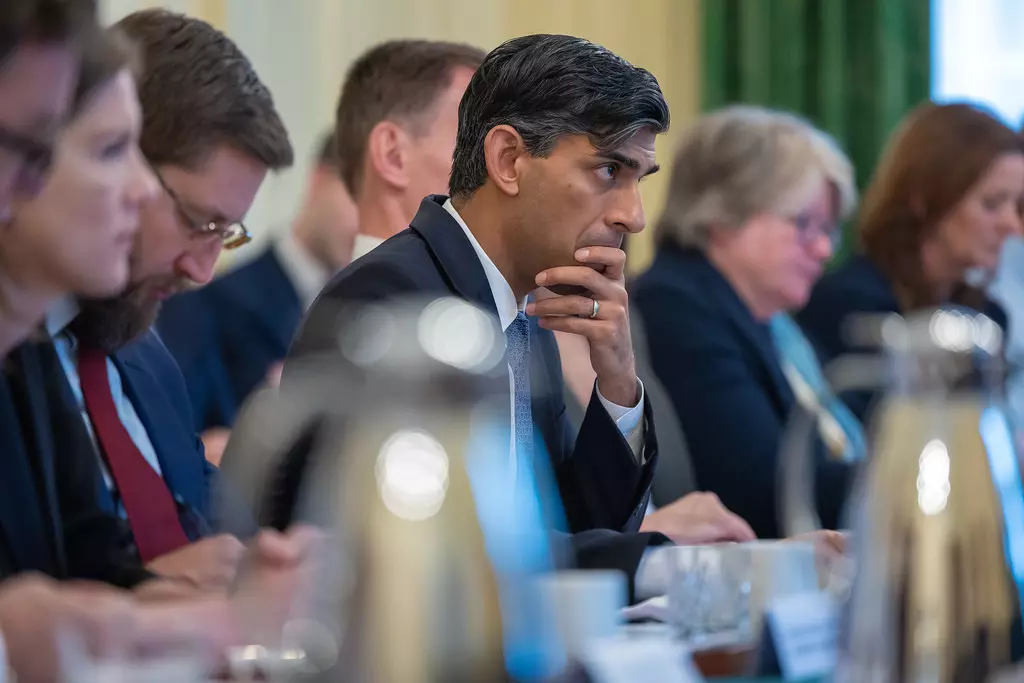
Why Rishi Sunak should worry about two bypoll losses ahead of general polls
Sunak’s supporters have blamed his predecessors Boris Johnson and Liz Truss. They argued the damage was done by them and by now much of the electorate had made up its mind.

Even as British Prime Minister Rishi Sunak was in Tel Aviv extending his support to his Israeli counterpart Benjamin Netanyahu in their war against Hamas and Palestine, back home his Conservative Party was losing two crucial by-elections.
The verdict in Mid Bedfordshire and Tamworth byelections – both triggered by unseemly controversies involving former Tory MPs, Nadine Dorries and Chris Pincher – was disastrous for Sunak and his party. These were not just ordinary seats that the Tories lost but historically safe Conservative pocket boroughs, compounding the impending doom which could affect the party in the general election next year.
Historic win
Mid Bedfordshire, an affluent constituency just outside London has elected Conservative MPs without fail for more than 90 years. The Labour Party made history by overturning a bigger majority – 24,664 – than any other candidate since 1945 and winning Mid Bedfordshire for the first time ever by just over 1,000 votes.
Labour’s victory in Tamworth in Staffordshire in middle England is no less momentous. Tamworth is a totemic seat as it was here that Robert Peel supposedly founded the modern Conservative party. Here too the Conservatives saw their 42.6% majority overturned as Labour secured one of its biggest byelection victories against the Conservatives since the Second World War with a swing of 24% in its favour.
Coming just after the byelections in July when the Tories lost two other safe Conservative seats and held on to former prime minister Boris Johnson’s Uxbridge and South Ruislip constituency by the skin of their teeth, Sunak desperately needed a win to raise the sinking morale among his MPs, particularly those who won by slim majorities in 2019.
While the Tories had conquered the “red wall” (former safe Labour seats in north England) in 2019, Labour was now taking previously impregnable blue seats almost every time they became vacant. The political map was being redrawn.
Less than a month ago, at the Tory party conference in Manchester, Sunak had pressed the reset button and defined himself as the candidate of “change”. About to complete his first year as prime minister, he practically launched his campaign for the next general election. He announced government policies from the party conference stage – something not normally done – hoping it would energise both MPs and the grassroots members.
But the results of the byelections show the strategy had failed. Sunak had said the country needed a change and voters agreed with him. Looks like they wanted a change from him.
The Tories’ official attempts to explain away the results were unconvincing. ‘Low voter turnout’ and that these were “protest votes” were the excuses for the poor show and it would all be different at a general election were the promises they offered. Yes, the turnout was definitely low, but it was because Tories were so disgusted with their party, that they decided to stay at home instead of coming out to vote.
Blaming Johnson, Truss
Sunak’s supporters blamed his predecessors Boris Johnson and Liz Truss. They argued the damage was done by them and by now much of the electorate had made up its mind. The fundamental appeal of the Conservative party is economic competence and Truss trashed that with her impossible tax cuts bringing markets tumbling down.
However, Sunak’s detractors argued that the Conservative voters had lost faith in the party which they felt no longer represented their values. It is assumed that Conservative values are strong law and order; knowing the difference between right and wrong; patriotism; respect for institutions; low taxes and most importantly keeping immigration to a minimum.
Sunak started off well last year when he entered No.10 Downing Street, building a strategy initially that he was the “steady guy” after Truss, but he then took the risk of devising five targets including ones on the economy and immigration, which he is now struggling to meet.
The Conservative right has been clamouring for tax cuts but the Treasury warns there is no room to deliver. The Institute for Fiscal Studies pointed out that the dire state of the public finances means that tax cuts risks stoking inflation, leading to higher interest rates and a lengthy recession.
Home Minister Suella Braverman has become the darling of the right by espousing lower immigration and sending off asylum seekers to Rwanda. However, a leadership challenge to Sunak at this stage is being ruled out. No one really wants to take on a party which is so very obviously heading for an electoral defeat; hence Sunak is left holding the baby.
In order to revive Tory morale, what Sunak desperately needs is for there to be no more by-elections till the general election. No more resignations from Tory MPs because they want to send a message that they do not support him. No more scandals and scams forcing Conservative MPs to step down.
If nothing changes drastically by next year (an election has to be called by January 2025) Sunak will go down in history not just as the first British prime minister of Indian-origin, but also as the man who led the Conservatives to their worst-ever election defeat.

